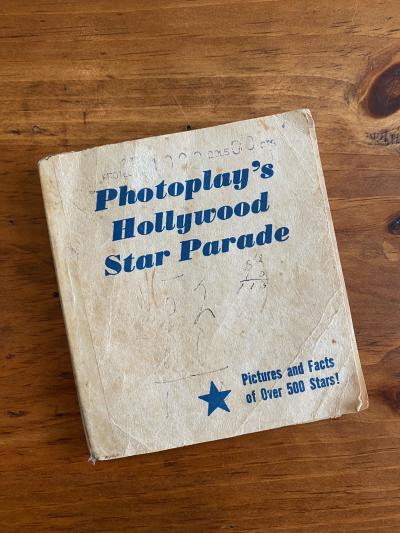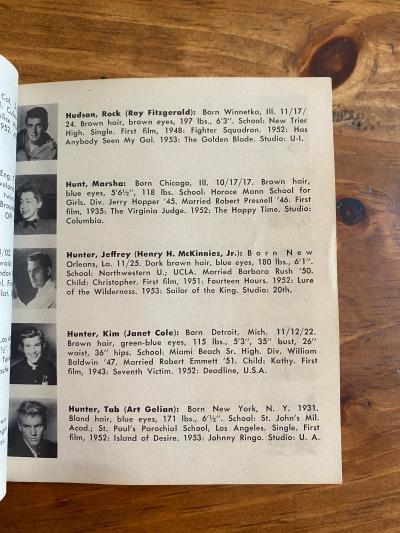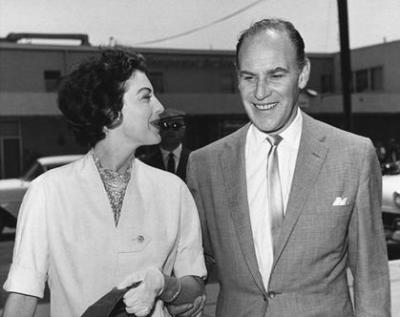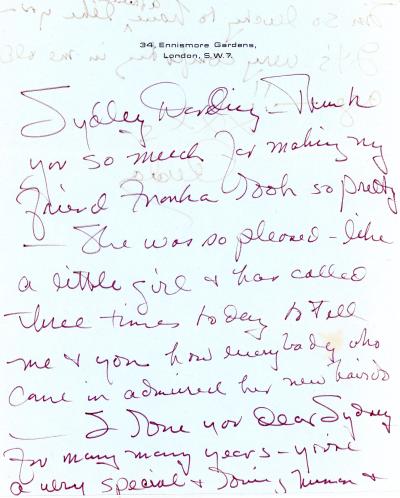Ava Gardner was discovered and achieved international fame through the power and reach of the studio system which largely ruled the Hollywood film business from the late 1920s through the 1960s. While the studios controlled most of the movie industry, they also attempted to control and heavily influence the personal lives and public images of the stars they had under contract. As Ava grew more confident in herself and her abilities as an actor, she repeatedly bucked at this controlling contract system – finding it to be restrictive, stifling, and often hypocritical. Ava was an open-minded, free-spirited individual who accepted people for who they were. She made deep, lasting friendships with people based on their character and personality and never judged or shunned anyone for their race, gender, or sexuality.
As constraining as Ava found the restrictions of the studio structure to be, her costars and coworkers in what we would call today the LGBTQ community* found it to be an even more difficult system to navigate. During Ava’s peak period in Hollywood, the 1940s-60s, being in a relationship with someone of the same sex was not only socially frowned upon, but it was also illegal in most places. (Illinois became the first state to decriminalize homosexuality in 1961.[i]) To openly be a part of the LGBTQ community within the studio system could easily cost a person their job either in front of or behind the camera. With the rise in popularity of “tabloid journalism” (also known as “yellow journalism” or “scandal sheets”) during this same period, the challenges were even greater for LGBTQ stars, and the powerful studios used the so-called “morality” clauses in their contracts to enact immense pressure and authority over the private lives of their stars and personnel. Studios coerced many actors to enter into cover marriages, sometimes called “Lavender Marriages," with someone of the opposite sex in order to preserve their “moral” reputation. Those who resisted such efforts by the studios were often fired or relegated to lower profile roles.[ii]
William Haines, often considered one of the first openly gay stars, resisted a “Lavender Marriage” and thus lost his job in the film business. Haines was under contract with Metro-Goldwyn-Mayer (MGM) in the 1920s and early 1930s, predating Ava’s time in Hollywood. Haines was able to have a successful career for several years despite his relationship with his partner Jimmie Shields being an open secret in the industry. However, in 1933, Louis B. Mayer, the head of MGM, gave Haines an ultimatum: marry a woman or leave the studio. Haines chose to terminate his contract. He and his partner started an interior design business and went on to be very successful, designing homes for many Hollywood stars.[iii]

William Haines’ and Jimmie Shields’ autographs on a guest register page with others from some of their Hollywood contemporaries. From the collection of Dean Sidden.
Speculation often followed some stars; however, few acknowledged it. Studio publicity departments worked hard to bury speculative stories or counter them with false narratives.[iv] Tab Hunter, one of a few stars of Hollywood’s Golden Age to publicly come out as gay later in life, discussed in his memoir the pressures he felt as a gay man in the film industry. During his career, the publicity department at his home studio, Warner Brothers, churned out made-up stories about his relationships with female costars and friends including Natalie Wood and Debbie Reynolds. During the studio era, Hunter wrote that he was “living two lives” and that it “was difficult for me.” Hunter dated fellow star Anthony Perkins and later went on to have a more than 35-year partnership with his husband, film producer Allan Glaser, that lasted until Hunter’s death in 2018. Hunter, Perkins, and Ava all appeared in The Life and Times of Judge Roy Bean (1972).[v]


Tab Hunter’s listing in Photoplay’s Hollywood Star Parade from 1953. From the collection of Lora Stocker.
These societal pressures and workplace demands prevented the vast majority of LGBTQ stars and behind-the-scenes talent from living their lives openly. Very few of these individuals discussed their private relationships publicly due to the enormous risks to their jobs, livelihoods, and even personal safety. Despite all of these roadblocks, many LGBTQ stars and others involved in Hollywood’s film industry did have committed, long-lasting relationships. Some of these stars were open about these relationships with their friends and peers, but virtually no one was publicly “out” to the broader world as we now know it today.
In recognition of Pride Month, we are highlighting three of Ava Gardner’s closest friends and contemporaries that may have been part of the LGBTQ community or may have embraced this identity in some way at some point in their life. Two of these stars navigated the studio system in front of the camera as successful actors with long careers and one of them had a thriving career behind the scenes.

“Dirk’s a gentleman. Makes quite the change.” – Ava Gardner
“Ava and I loved each other instantly.” – Dirk Bogarde
“Ava Gardner…is one of my greatest and most beloved friends.” – Dirk Bogarde
Dirk Bogarde, Ava’s friend and costar in The Angel Wore Red (1960) and Permission to Kill (1975), was in a long-term, committed relationship with his manager Anthony Forwood, with whom he shared a home for almost four decades. Bogarde never came out as gay or publicly acknowledged that his relationship with Forwood was a romantic one; however, his sexuality was somewhat of an open secret among his friends and within the entertainment industry. Bogarde likely made the conscious decision to not openly come out during his lifetime because of the pressures of the studio system and the damage it could cause to his career. Despite remaining private about his romantic life, he also resisted industry and societal pressures by refusing to enter into a “marriage of convenience.” When asked directly by interviewers about his sexuality, Bogarde would say that the clues to his private life were found in his writing, and “if you’ve got your wits about you, you will know who I am.” Later in life, Bogarde did admit that he had a long relationship with Forwood, and, after his passing, his family confirmed that the two were committed lifelong partners.
Ava and Dirk became friends on the set of The Angel Wore Red and remained close for the rest of their lives. They corresponded and visited one another. Ava even appears in some of Tony Forwood’s home videos, playing with his and Bogarde’s pet corgis.

“Dear Ava Lavinia…Ah, my treasure, how art thou?...And besides all that, I love you. Roddy.” – letter from Roddy McDowall to Ava Gardner
Roddy McDowall was a close friend of Ava’s and directed her in The Ballad of Tam Lin (1970). McDowall never married and his sexuality was an open secret in the Hollywood industry, though he never publicly came out or spoke about his relationships. According to multiple biographies of Montgomery Clift, McDowall was in a relationship with Clift. The two lived together and remained friends after they broke up.[vi]
A photographer as well as an actor and director, McDowall also photographed Ava. He said of working with her on the film Tam Lin: “In 1969, we made a movie together, I directed her in The Ballad of Tam Lin. She hadn't made a film in a couple of years, it was a very large part, and she was very nervous. It was not a successful movie, by any manner of means, but her performance is remarkable and dead-on.” According to Mearene (Rene) Jordan, Ava’s personal assistant and friend, “Roddy McDowall was one of Miss G’s oldest friends.” Ava had agreed to star in his film in order to help him secure backing and because he requested her for the role.
McDowall also contributed a chapter to Ava’s autobiography, Ava: My Story in which he said, “Ava was like the most fantastic relative because she didn't make you pay a price for knowing her. She was the great older sister who just adores you.” In 1972, McDowall and Ava costarred in The Life and Times of Judge Roy Bean. After Ava’s passing, McDowall was an early and vocal supporter of the Ava Gardner Museum – serving as a member of the Museum’s honorary committee.

“That was Ava. She was always ready to have fun and never took herself seriously. She had not an ounce of pretense, and that’s what I loved about her.” – Sydney Guilaroff
“You’re a very special and loving human and I’m so lucky to have a friend like you. It’s very comforting in my old age.” – Letter from Ava Gardner to Sydney Guilaroff
Sydney Guilaroff was a popular Hollywood hairstylist, and Ava’s personal favorite stylist. He was never publicly “out,” but he is alleged to have had both same-sex and opposite-sex relationships.[vii] His private, romantic relationships cannot be corroborated. He never married; however, he desperately wanted a family. At the age of 31, Guilaroff became the first never-married man in the United States to be allowed to adopt a child. In 1938, he adopted his son Jon, whom he named after Joan Crawford. He adopted another son, Eugene, named after Sydney’s father, three years later. Guilaroff’s son Jon recalled that he “was a doting father who made it a point to have dinner with his sons every night and who provided them a special childhood bonus: Hollywood's greatest stylist gave them haircuts.”[viii]
Ava often requested Sydney to be her hairstylist on her films – with the two friends working together on at least a dozen productions including such classics as The Hucksters (1947), The Great Sinner (1949), and Show Boat (1951). They remained friends for many years, frequently corresponding with one another. Sydney even did Ava’s friend Franka’s hair at her request once.


Ava sent this handwritten letter on her personal stationery to Sydney. From the collection of Dean Sidden.
Throughout her five-decade career, Ava knew countless members of the LGBTQ community. Whether her costars or behind-the-scenes talent and crew on her films, several of these folks were her friends, neighbors, travel companions, and close confidants. They had to not only navigate the challenges of their careers within the studio system but also the state and federal laws that restricted their very existence. In the end, these brave individuals not only enriched the film industry but also enriched Ava’s life. To Ava, sexual orientation didn’t matter. We hope that everyone has the ability to live their lives as fully, authentically, and unapologetically as Ava, and hope that we can all be kind, respectful, and accepting.
A special thank you to Bennett Chapman for his valuable contributions to the content of this article.
*NOTE: Modern terms today often describe someone’s sexual orientation, gender, or sexuality and are closely associated with individual identity. This has not historically been the case and these types of terms may or may not have been used by the people discussed in this article. Many would not have described themselves as such, publicly or even privately, even while they might have acknowledged their romantic relationships. We do not ascribe these terms to these individuals because we do not know how they would have preferred to identify or refer to themselves. Instead, we are only highlighting their known relationships and discussing them to be part of the broader LGBTQ community as we would call it today.
[i] “LGBTQ Rights Milestones Fast Facts,” CNN, https://www.cnn.com/2015/06/19/us/lgbt-rights-milestones-fast-facts/index.html
[ii] “When Hollywood Studios Married Off Gay Stars to Keep Their Sexuality a Secret,” by Thaddeus Morgan, History, https://www.history.com/news/hollywood-lmarriages-gay-stars-lgbt
[iii] “Out of the Closet, Off the Screen: The Life of William Haines,” TCM, https://www.tcm.com/tcmdb/title/472622/out-of-the-closet-off-the-screen-the-life-of-william-haines#synopsis
[iv] “Special Theme: LGBTQ Directors,” by Rebecca Kumar, TCM, https://www.tcm.com/articles/Programming%20Article/021616/special-theme-lgbtq-directors/
[v] Tab Hunter, Tab Hunter: Confidential; “Tab Hunter, 86, 1950s Hollywood Heartthrob, Is Dead,” by Aljean Harmetz, New York Times, https://www.nytimes.com/2018/07/09/obituaries/tab-hunter-86-1950s-hollywood-heartthrob-is-dead.html
[vi] Monty: A Biography of Montgomery Clift, by LaGuardia, Robert; Montgomery Clift: A Biography, by Bosworth, Patricia.
[vii] “Friends of the Friends of Dorothy,” by Dr. Bill Lipsky., San Francisco Bay Times, https://sfbaytimes.com/friends-friends-dorothy/
[viii] “Sydney Guilaroff, 89, Stylist to Stars, Is Dead,” by Robert Mcg. Thomas Jr., New York Times, https://www.nytimes.com/1997/06/01/us/sydney-guilaroff-89-stylist-to-stars-is-dead.html





